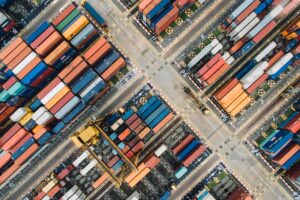Chemical manufacturers that sell to different markets know that requirements for safety data sheets (SDSs) can vary from country to country. And as companies that sell to the Singapore market may know, the Southeast Asian country recently issued revised standards that are in alignment with the U.N. Globally Harmonized System (GHS) of Classification and Labelling of Chemicals Revision 7. It’s also important to note the introduction of nanomaterials in Singapore’s latest revision.
The Singapore Standards Council released the revision of SS 586-2:2022 Globally harmonised system (GHS) of classification and labelling of chemicals and SS 586-3:2022 Preparation of safety data sheets (SDS) on February 6, 2023. This brought Singapore into alignment with U.N. GHS Revision 7. The Singapore Standards Council’s previous version was aligned with U.N. GHS Revision 4. Singapore’s updated standards can be purchased directly from the Singapore Standards Shop.

Aligning the Singapore GHS with the U.N. GHS Revision 7
Many changes were introduced between U.N. GHS Revision 4 and U.N. GHS Revision 7, one of which was the adoption of the new physical hazard, desensitized explosives, which is defined as “solid or liquid explosive substances or mixtures which are phlegmatized to suppress their explosive properties in such a manner that they do not mass explode and do not burn too rapidly and therefore may be exempted from the hazard class ‘Explosives’” (U.N. GHS Revision 7, Chapter 2.7). This new hazard class was adopted by Singapore in its entirety, including categories 1, 2, 3 and 4.
Other significant differences between Revision 4 and Revision 7 are the addition of: Table A.4.3.9.1: Basic physical and chemical properties; Table A.4.3.9.2: Data relevant with regard to physical hazard classes (supplemental); and Table A.4.3.9.3: Further safety characteristics (supplemental). These were implemented as part of U.N. GHS Revision 6. The only table required on the safety data sheet (SDS), though, is A.4.3.9.1: Basic physical and chemical properties. This table provides relevant information required for every property listed under Section 9 of the SDS, including short description, value(s), unit, conditions (e.g., temperature, pressure) and method. This table was introduced in the Singapore SS 586 – 3:2022 as Annex D and also includes the A.4.3.9.3: Further safety characteristic table as Annex E.
According to U.N. GHS, a mixture is classified as an aspiration hazard category 1 when the sum of the concentrations of category 1 ingredients is greater or equal to 10% and the mixture has a kinematic viscosity of less than or equal to 20.5 mm2/s, measured at 40°C. The relevant ingredient threshold for those ingredients classified as aspiration hazard category 1 is greater than or equal to 1%. Singapore’s GHS standard provided clarity regarding the mixture classification criteria for aspiration hazard, thus aligning with the U.N. GHS criteria:
- Table 4 – Classification criteria/method for mixtures in the Singapore standard included the addition of “summation method (total component).”
- Table 5 – Generic cut-off value/relevant ingredient threshold included a 1% relevant ingredient threshold.
Singapore’s GHS standard further aligns with the U.N. GHS Revision 7’s amendment of the generic cut-off value/relevant ingredient threshold for acute toxicity. In the previous version of the Singapore standard, the acute toxicity generic cut-off value/relevant ingredient threshold used for the purpose of classifying substances or mixtures deviated from U.N. GHS. The cut-off value for acute toxicity was 0.1% for categories 1 through 3 and 1.0% for category 4, but now it is simply 1% for all applicable categories.
Flammable liquids category 4 is defined in Chapter 2.6 of U.N. GHS as a flammable liquid with a flash point greater than 60°C and less than or equal to 93°C. In the case of Singapore, they had adopted categories 1 through 3, but for category 4, it stated, “Singapore adopts the GHS physical hazard classes and categories except for Flammable Liquids Category 4. The only chemical that is required to be classified under this category is diesel.” However, the 2022 version of the standard removed the reference to diesel. For flammable liquids category 4, users must now consult the national fire authority to obtain the latest information on which materials are classified under this category.
According to Annex 4 A.4.3.2.3 of U.N. GHS, the statement “May form explosive dust-air mixture if dispersed” can be displayed under Section 2 “Other hazards which do not result in classification” for dust explosive hazards, also known as combustible dust. The same requirement is noted in the Preparation of safety data sheet (SDS) SS 586-3:2022 standard. However, Singapore deviates from the U.N. with the additional requirements:
- SS 586-3:2022 requires safe handling and storage practices for those substances or mixtures posing a combustible dust hazard to be provided in Section 7 of the SDS.
- SS 586-2:2022 states that “Warning: May form explosible dust-air mixture if dispersed” shall be indicated on the product label if the chemical poses a combustible dust explosive hazard.
The Monitoring and Regulation of Nanomaterials
There are additional requirements specific to Singapore, such as guidance on when an SDS or label should be reissued. But the most notable new obligation is the introduction of nanomaterials.
A nanomaterial is defined in Singapore’s Preparation of safety data sheet (SDS) standard as a “Material with any external dimensions in the nanoscale or having internal structure or surface structure in the nanoscale.” The standard further states that “If the chemical is a nanomaterial, it should be identified” in Section 1 and 3 of the SDS.
The inclusion of this new requirement in the Singapore standard should not be surprising. Nanomaterials have become a hot topic and as a result, authorities are attempting to define the best path forward to regulate and monitor these substances. We have seen this most recently in Europe, with the Commission Regulation (EU) 2020/878 amending Annex II to Regulation (EC) No 1907/2006 (also known as REACH Annex II 2020).
REACH Annex II requires the word “nanoform” to be appended to the substance in each relevant section, with links to the relevant safety information for each of those nanoforms. As well, Section 3 and 9 of the SDS must include the particle characteristics of the nanomaterials (e.g., number-based particle size distribution, shape and aspect ratio of particles, crystallinity, surface functionalization/treatment and specific surface area, etc.). At this time, however, U.N. GHS has not published guidance for nanomaterials/nanoforms.
Determining What Modifications Are Required
All things considered, the SS 586-2:2022 Globally harmonised system (GHS) of classification and labelling of chemicals and SS 586-3:2022 Preparation of safety data sheets (SDS) standards should be reviewed in their entirety to ensure you understand the nuances of these new standards. This is important because you will want to conduct an audit of your software solution to confirm that all new requirements and modifications have been implemented. For those who may still be creating SDSs and labels manually, you not only need to be well-versed in the regulatory requirements, but you will also need to determine the best approach for updating impacted products, so they can be revised in a timely manner. Additionally, whether your SDSs and labels are created manually or automatically with a software solution, you will need to ensure that proper training is conducted throughout your business units.






